
views
Picking a Barrel Horse
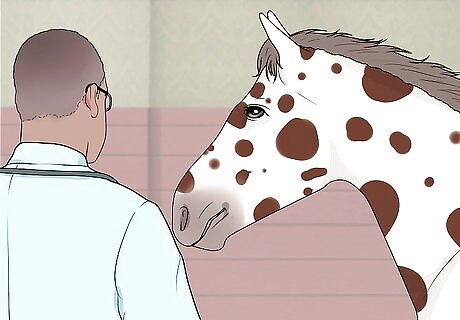
Look for Appaloosa, Quarter, or Paint Horses for the best barrel racing breeds. These breeds are versatile and have good feet and legs to make the turns necessary in barrel racing. Appaloosas, Quarter Horses, and Paint Horses all are easier to train so you don’t need to break them in as much as other breeds. Avoid picking thoroughbred or gaited horses since they’re trained to run and probably won’t turn around the barrels as well.
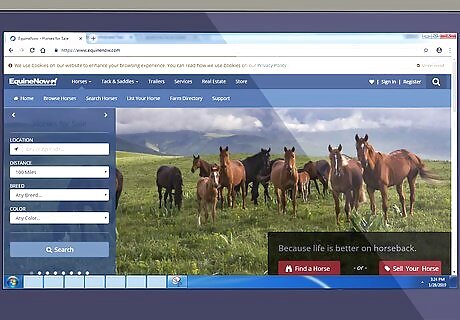
Check online or at a tack shop for a horse to buy. Many breeders will post horses they have for sale on online sales websites or advertise at tack shops. Look for horses near your area and send query messages to the seller about the horse. Pick a few different horses to choose from in case one of them sells. You can find online postings on sites like EquineNow or HorseClicks. If you’re searching online, make sure to look for locations close to you since it’s difficult to travel with a horse over long distances.
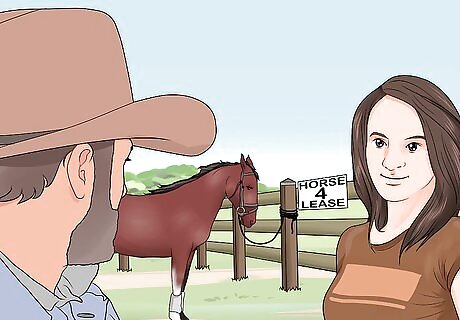
Lease a horse if you don’t have the time to care for one on your own. Check with local stables or a horse-riding instructor to see if they can lease a horse for you to ride. While you’ll still need to go to the stables and ride the horse often, you don’t need to worry about the responsibilities of taking care of it. Horses for lease can also be found online. Choosing the Type of Lease A full lease requires you to pay for boarding and medical care, but you’re able to use the horse whenever you like. A share-lease is a cheaper option, but you can only ride the horse about 3 days per week.
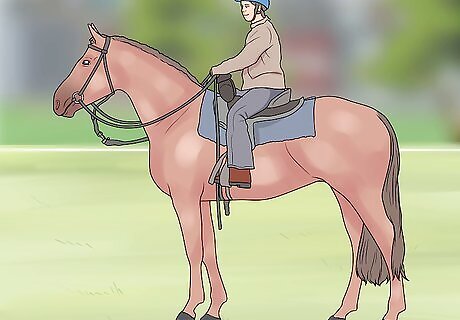
Meet and ride the horse before you buy it if you can. Interact with the horse as much as possible to see how it responds to you. See if you can take it for a ride to see how it handles and how well it work with your commands. If your horse is unresponsive or handles poorly, consider other options. All horses respond differently, so what worked for a horse you’re familiar with may not work for a new horse. Talk to the current owner to see how well it handled or certain tricks they’ve used to help train their horse.
Building a Training Routine

Warm up your horse by walking, trotting, and cantering in a straight line. Start with a slow walk to help your horse begin its exercise and loosen up. After a few times back and forth, increase the speed to a light trot. When your horse is comfortable trotting, switch to a faster canter to work your horse up to full speed. Cantering may also be referred to as “loping.” Exercise your horse in a circle to practice slight turns while your horse gains speed.
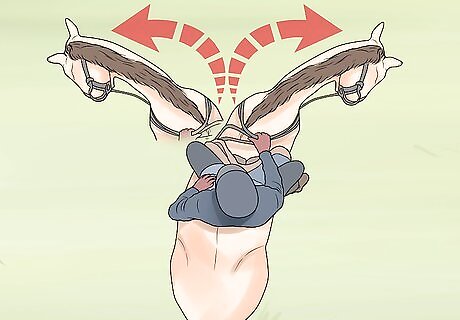
Practice lateral moves in both directions. Lateral moves are when your horse steps sideways, and it helps your horse loosen up its leg muscles. Put pressure on one side of your horse with your leg to help guide it to the side. Your horse will start slowly walking in the direction that you’re applying pressure. Practice moving laterally to the right and the left so your horse is comfortable doing both. Make sure your horse’s head and neck stay straight while it’s moving sideways.

Walk your horse through the barrel pattern so it can learn it. Command your horse to walk in the cloverleaf pattern around the 3 barrels used for barrel racing. Start with either the barrel on the right or the left. When your horse’s shoulders pass the opposite side of the barrel, start your turn so its hind end won’t bump into the barrel. Then go to the barrel directly across from the first. Finally, go around the top barrel before returning to your starting position. Continue working around all of the barrels until your horse is comfortable with the pattern. Pick up the reins on the side of your horse in the direction you want it to turn to help guide its nose around the barrel.
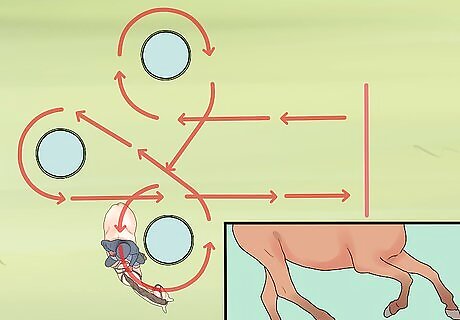
Increase your horse’s speed as you run the pattern. As your horse gets more comfortable walking the pattern, increase the speed to a trot and try making your turns around the barrel. Run through the course at a trot until you easily get around the barrels. Then, work up to a canter to finish the course faster. If your horse seems exhausted or isn’t following your commands, slow down and work back up to full speed again.
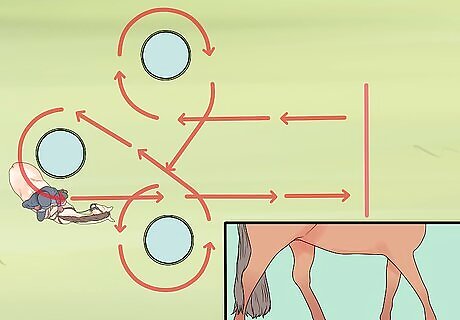
Cool down by walking your horse. After a vigorous workout, it’s important for your horse to cool down so it doesn’t get any muscle cramps or tendon damage. Slowly work down from higher speeds to a walk to calm your horse down.Tip: Walk your horse through the barrel pattern as a cool down so it remembers it for the next training session.
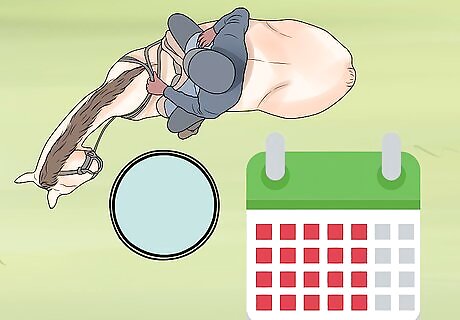
Train with your horse 4-5 days per week. Keep your horse familiar with the barrel racing path so it gets more comfortable running the course. Keep your exercise routines close to 1 hour long so your horse isn’t burnt out by the end. Always give your horse 2 days from the barrel racing routine so it doesn’t get bored of the same course. On the off days, take your horse out for a ride but don’t make it run a barrel pattern. This way, your horse won’t get tired of doing the same routines each day.
Keeping Your Horse Healthy
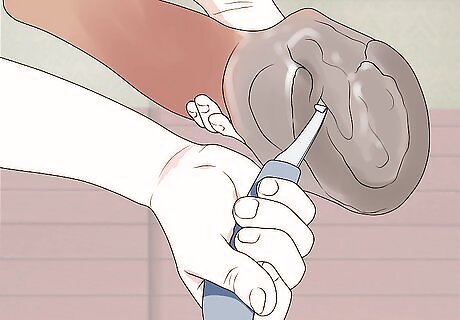
Make sure your horse’s hooves are trimmed regularly. Long hooves put stress on your horse’s tendons and ligaments, so they need to be cut. Clean off your horse’s hooves first with a hoof pick before using a pair of hoof clippers to remove any overgrowth. If you’re not comfortable trimming horse hooves yourself, find a farrier to do it for you. Trim your horse’s hooves every 6 weeks.
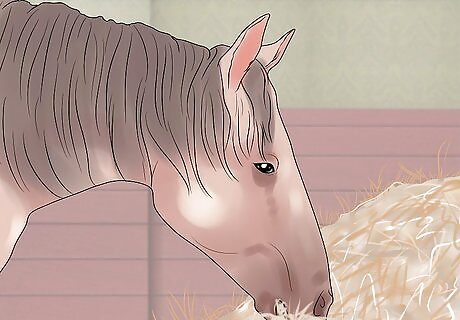
Feed your horse a nutrient-rich diet. Find a well-balanced performance feed made for active horses. Since barrel racing is a high-intensity exercise, look for a feed high in soluble carbohydrates so your horse has more energy. Keep your horse on a high-calorie diet so it can perform well during show season. Consider adding an amino acid supplement to your horse’s feed to promote muscle recovery and development.
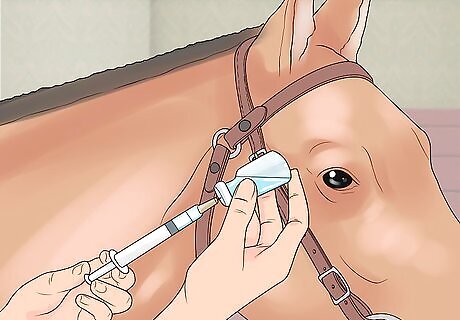
Keep your horse up to date with vaccinations and periodic health checks. Have a vet look at your horse at least once every year to make sure it's still healthy. Keep records of your horse’s medical history and vaccinations so you know when to get it vaccinated and what should be done to help it. Common vaccinations include tetanus, encephalomyelitis (inflammation of the nervous system), viral rhinopneumonitis (respiratory disease), and influenza.Tip: If your horse is over 20 years old, have a vet check it at least twice a year.













Comments
0 comment